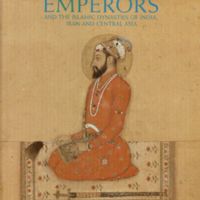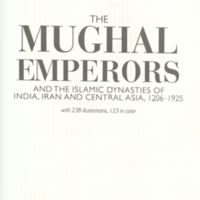The Mughal Emperors: And the Islamic Dynasties of India, Iran and Central Asia, 1206-1925
Dublin Core
Title
The Mughal Emperors: And the Islamic Dynasties of India, Iran and Central Asia, 1206-1925
Description
"This book describes the rulers from the thirteenth to the twentieth centuries whose reigns and lands were affected by Mongol/Mughal power and who all shared the Muslim high civilization that flourished from Iran and Central Asia through Afghanistan to north and central India. Among the prominent leaders were Timur, or Tamerlane, who lived a life of remorseless conquest; Shah Abbas the Great, who brought the achievement of early modern Iran to its peak at Isfahan; Akbar the Great, who fostered an idea of inclusive government for India; and Shah Jahan, who gave India its finest monument, the Taj Mahal."--Amazon.com.
Publisher
New York : Thames & Hudson
Contributor
Francis Robinson
Table Of Contents
Preface: Mughal lives -- Introduction: Chingiz Khan and the rise of the Mongol land empire -- Textual sources -- Il Kahns, Muzaffarids and Timurids, 1256-1506 -- The sultans of Delhi, 1206-1526 -- The Mughals, 1526-1858 -- The Safavids, Afsharids, Zands and Qijars, 1501-1925.
Text Item Type Metadata
Original Format
Book
Citation
“The Mughal Emperors: And the Islamic Dynasties of India, Iran and Central Asia, 1206-1925,” Humanities Hub, accessed December 7, 2025, https://humanitieshub.sdsu.edu/omeka/items/show/1586.


